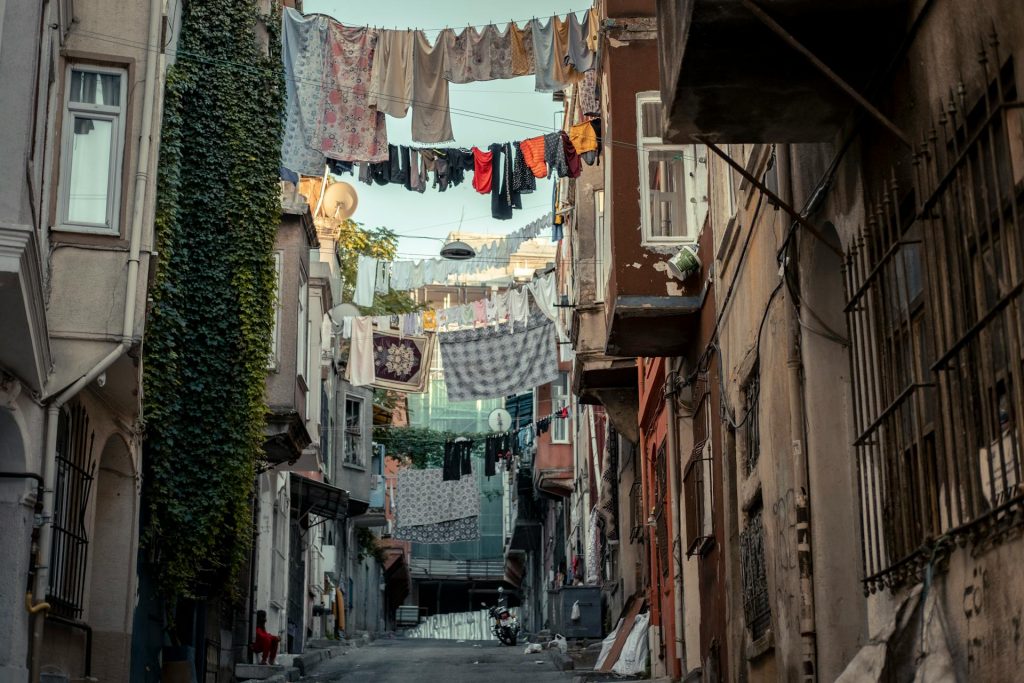Urbanization impacts how we define a sustainable livelihood. Inconsistent distribution and use of infrastructure characterize a modern city’s conflict of interest: how can cities achieve sustainable goals, progress, and grow without leaving any community behind? At the tipping point of gentrification lies the defying criteria of success: do urban planners have the right toolkits to innovate in their cities without marginalizing the communities that can not afford the gentrified cost of sustainability? Or ultimately, could a new model for micro-entrepreneurial nature-based solutions (NbS) bring the financial (and social) incentives needed to adopt such a model?
By 2050, 70% of the world’s population is expected to live in urban areas (UN, 2014). Analyzing this indicator leaves no question of the importance of activating all city dwellers to adopt ascending sustainable lifestyles so that the built environment can allow ecosystems to function within their natural capacity and optimal service (de Groot et al, 2002). The totality of my life was shaped within cities, some of which are the largest, smartest, or even greenest. It is through that lens that I have systematically observed that today’s urbanism is cementing the reality of everything that is absent rather than delivering the fulfillment of everything that is possible from within it.
If we strip off our privileges, we can observe the contrasts in livelihoods that exist within our own city. It is possible to experience, and even quantify that some inequalities are weaved in at such depth, often; to a degree near irreversible. The demand for space within our cities has made them less affordable, supported by consumerism cultures that push people down under the poverty line so subtly that it has become an acceptable pillar for our urban society. Why couldn’t I find electric EV chargers on Rainers Lane but saw plenty unused on Westminister?
Society is flattered by the design of gentrified movements. Taking pride in introducing the intra-expatriation of lifestyles that are local, yet foreign to the majority of a national population. In the city of Lisbon, my hometown, “the tuk-tuk has taken over the streets“, as the success of tourism influenced a process of social transformation resulting in six historical neighborhoods losing 30% of their local population since 2013. We are left to imagine what has emerged to fulfill that loss. Abandonement of spaces, leads to a rush to gentrify, allowing new lifestyles to emerge at a pace too rapid for real culture to cement, opening the road for communities in forgotten spaces.
In 2023, I worked in Montevideo, a city populated by 1.7M, approximately 40% of Uruguay’s population. 530km2 illustrated by an ascending skyscraping skyline, underlined by networks of manual waste collection. Density required the rationing of water supply, given the salinization of the Río de la Plata caused by the drought in the Amazon. The spiral of urban development in Uruguay influenced the weakening of low-skilled labor, pushing for co-habitation in areas of high density of the richest and the poorest. Although the general poverty levels in Uruguay have declined, poverty still prevails among children or adults whose household composition includes a child. In 2023, UNICEF reported that 19% of children in Uruguay were living in poverty, exemplifying the notion that future generations are greatly and disproportionally impacted by the social inequality of urbanism.
System design as a gateway for urban inclusion and conservation
In contrast comes Tokyo, the largest city in the world. No other country has experienced such intense urban movement, yet still balancing a high degree of social inclusion. Japan has one of the lowest rates of homelessness, less than 3000 people (0.02%) are declared homeless (Japanese Ministry of Health, 2024). While these figures can be challenged, in Japan people, space, and nature coexist in a choreographed harmony, enabled by several assistive technologies that are used every day. Accessibility is a strong pillar of inclusion within Japanese society, especially for children and senior citizens. The familiarity with digital tools helps bypass a child’s literacy barriers and lifts senior citizens as strong actors in the core sustainability principles of their community. In fact, senior citizens can usually enroll in specifically designed employment programs within their local municipalities, allowing for their participation in conservation programs for food protection and agricultural projects (University of Tokyo, 2016).
The Window for Nature-based Solutions
As discussed above, principles of sustainability are being compromised by the requirements of affordability and return on investments. There is, however, an opportunity to design technology to help city planners narrow and mitigate the risk of marginalization that occurs when a city evolves. In our work at Tech Backstage we have anchored our strategy for software development on Nature-based Solutions.
We are building a marketplace to foment sustainable micro-entrepreneurship in locations within marginalized communities. Through our platform, city planners and urban developers will be able to identify and qualify spaces through schemes to optimize inclusion and regeneration. We have started our pilot phase in the city of Oslo with a bet that our experiments intersecting curated green spaces, micro-entrepreneurship and the optimization of abandoned structures will illustrate key modules of our digital platform for the management and regeneration of the urban space.
In this vision, our formula equates the micro-employment of adults providing climate-related services, within spaces of their community as a starting point to lift a degraded neighborhood. In addition, it sustains a mutually reinforced balance: allowing children to experience the attainment of the future goals they can aspire to achieve.
In summary, city planners and property developers need access to scalable toolkits that enable them to regenerate hot spots of underutilized spaces. Such a process can become an equity-building exercise if communities can opt into entrepreneurial choices and act toward their own advancement. It is at this point, that disadvantaged environments start to see the harmonization of social disparities.

The author
Fátima Sani is the Founder and MD of Tech Backstage, a sustainability advocacy tech studio located in Oslo. Fátima has worked for Google and TOMRA designing PaaS service strategies for urban recycling programs. Currently works to establish a Nbs marketplace for the regeneration of marginalised communities.

